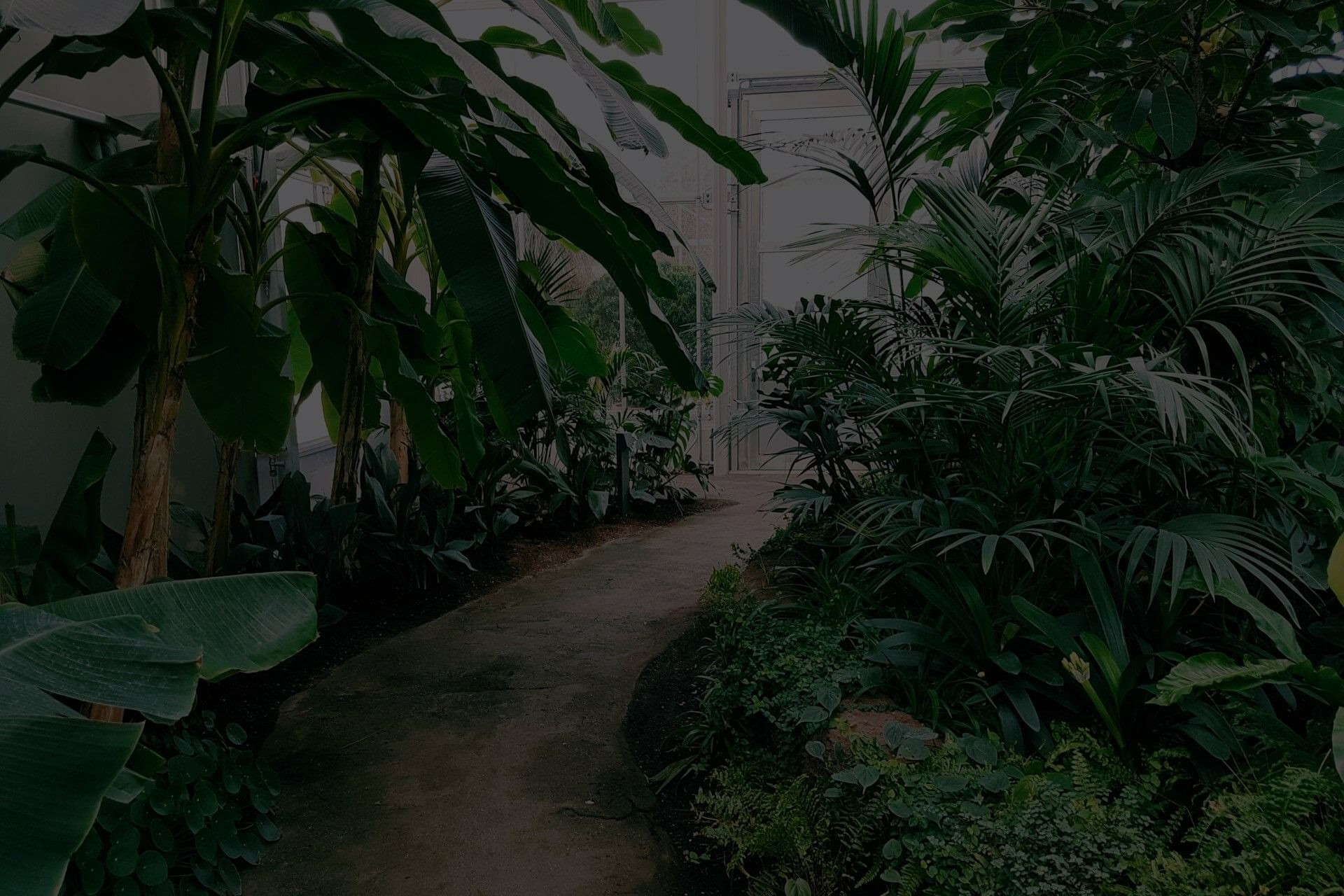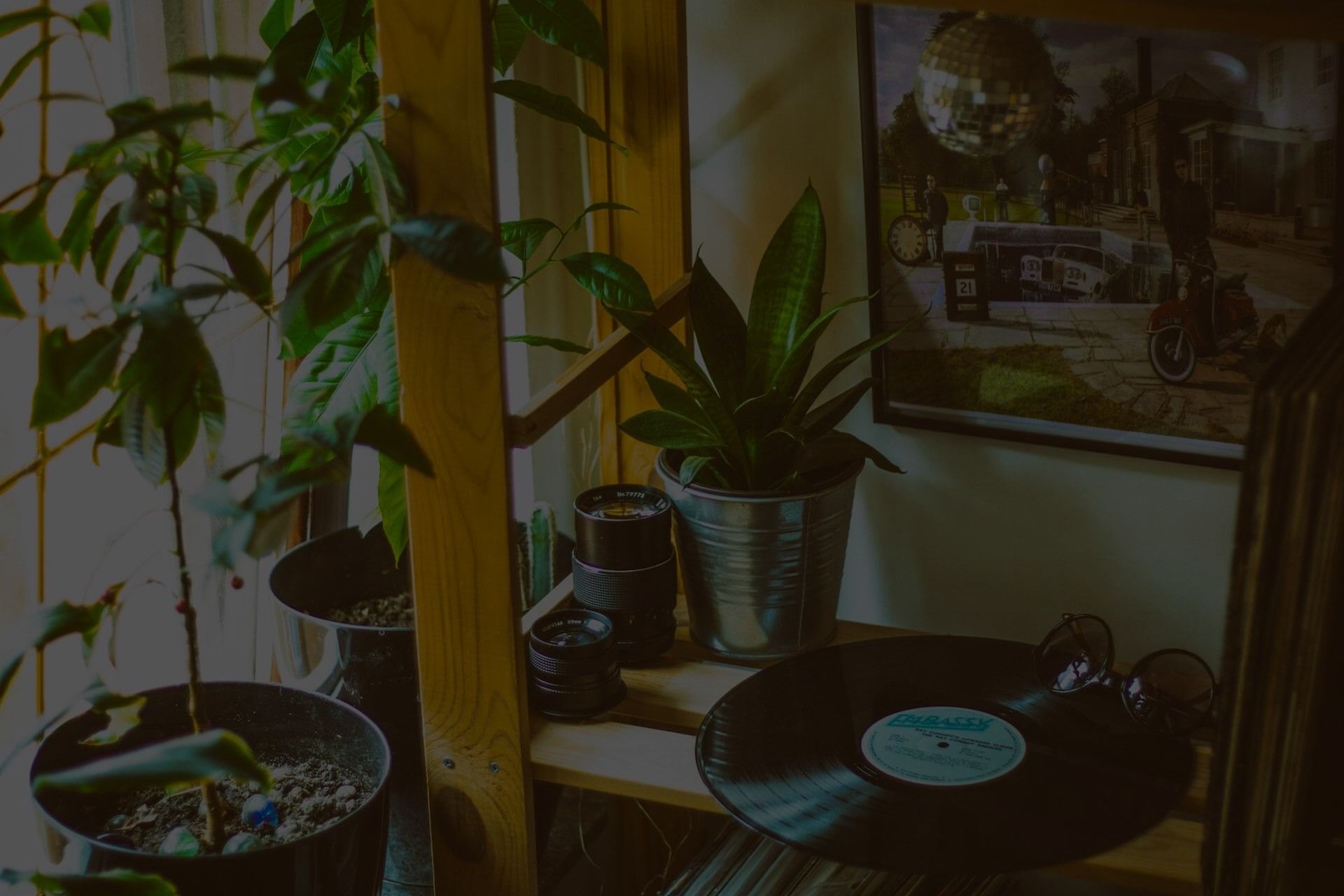At Botanic Beam, we understand the importance of proper plant care, and one of the most critical aspects of plant care is watering. Overwatering is a common mistake that can be detrimental to your plants' health. But, can overwatered plants recover? The answer is yes, but it requires prompt action and a thorough understanding of the recovery process. In this article, we'll delve into the world of overwatered plants, exploring the signs, causes, and most importantly, the steps to take to help your plants recover.
Table of Contents
Signs of Overwatering
Recognizing the signs of overwatering is crucial to taking prompt action. Some common signs include:
Yellowing or droopy leaves: When the roots are waterlogged, they can't absorb oxygen, causing the leaves to turn yellow or droop.
Soft, mushy stems: Overwatering can cause the stems to become soft and mushy, making them more susceptible to disease and pests.
Water pooling around the base: If you notice water pooling around the base of the plant, it may be a sign that the soil is waterlogged.
Fungal growth: Fungi thrive in moist environments, so if you notice fungal growth on the soil or stems, it could be a sign of overwatering.
Causes of Overwatering
Before we dive into the recovery process, it's essential to understand the causes of overwatering. Some common causes include:
Incorrect watering schedule: Watering your plants too frequently or in excessive amounts can lead to overwatering.
Poor drainage: If the potting mix doesn't drain properly, water can accumulate in the soil, causing root rot.
Weather conditions: Heavy rainfall or high humidity can contribute to overwatering.
Inadequate pot size: Using a pot that's too small for the plant can cause the soil to become waterlogged.
How to Check for Overwatering
To determine if your plant is overwatered, perform the following checks:
Stick your finger into the soil up to the first knuckle. If the soil feels wet, it's likely overwatered.
Check the drainage holes: Make sure the pot has adequate drainage holes to prevent water from accumulating in the soil.
Observe the plant's behavior: If the plant is consistently droopy or yellow, it may be a sign of overwatering.
The Recovery Process
Once you've identified the signs of overwatering, it's time to take action. The recovery process involves:
Stop watering: Immediately stop watering your plant to prevent further damage.
Improve drainage: Add a layer of perlite or vermiculite to the potting mix to improve drainage.
Prune affected areas: Remove any dead or dying leaves or stems to prevent the spread of disease.
Repot: If the plant is severely overwatered, consider repotting it in a well-draining potting mix.
Emergency Care for Overwatered Plants
In severe cases of overwatering, emergency care may be necessary. This includes:
Aerating the roots: Gently remove the plant from the pot and aerate the roots by gently teasing them apart with a fork.
Providing oxygen: Place the plant in a well-ventilated area or provide supplemental oxygen using an oxygen-rich fertilizer.
Reducing humidity: Move the plant to a dry, well-ventilated area to reduce humidity and prevent further waterlogging.
Preventing Overwatering in the Future
To prevent overwatering in the future, follow these best practices:
Water carefully: Water your plants when the top inch of soil feels dry to the touch.
Monitor the weather: Adjust your watering schedule according to weather conditions.
Use a moisture meter: Invest in a moisture meter to accurately measure the soil's moisture levels.
Choose the right potting mix: Select a potting mix that drains well and is designed for your plant's specific needs.
Conclusion
Overwatering can be a devastating mistake, but with prompt action and the right techniques, your plants can recover. Remember to monitor your plants closely, adjust your watering schedule accordingly, and take preventative measures to avoid overwatering in the future. By following the guidelines outlined in this article, you'll be well on your way to becoming a plant expert and ensuring the health and happiness of your beloved plants.
At Botanic Beam, we're committed to providing you with the most in-depth information on plant care. Stay tuned for more informative articles and expert advice on how to keep your plants thriving.
Frequently Asked Questions
What are the signs of an overwatered plant?
Overwatered plants often exhibit droopy or yellowing leaves, soft and mushy stems, and a general decline in growth. You may also notice water pooling around the base of the plant or a sour, unpleasant smell emanating from the soil. In severe cases, the roots may begin to rot, causing the plant to collapse or die.
How do I know if my plant is overwatered or underwatered?
A good rule of thumb is to check the soil moisture by sticking your finger into the soil up to the first knuckle. If the soil feels dry, it's likely underwatered. If it's waterlogged or soggy, it's likely overwatered. You can also observe the plant's behavior and adjust your watering schedule accordingly.
Can all overwatered plants recover?
While many overwatered plants can recover with proper care, some may be too far gone. The likelihood of recovery depends on the severity of the overwatering, the type of plant, and how quickly you intervene. If you catch the issue early, most plants can recover. However, if the roots have already rotted or the plant has been severely damaged, it may be too late.
How long does it take for an overwatered plant to recover?
The recovery time varies depending on the plant's condition and the care it receives. With proper treatment, some plants can recover within a few weeks, while others may take several months. Be patient, and don't rush to repot or fertilize the plant until it's fully recovered.
What should I do if I've overwatered my plant?
Stop watering immediately, and let the soil dry out slightly. Remove any dead or rotting leaves or stems, and trim back the plant to encourage new growth. Repot the plant in fresh, well-draining soil, and reduce watering to once a week or less until the plant recovers.
Why do plants get overwatered in the first place?
Overwatering often occurs due to a lack of understanding about a plant's watering needs, poor soil quality, or inadequate drainage. It can also be caused by climate changes, pot size, or incorrect potting mix. Be sure to research your plant's specific needs and adjust your care routine accordingly.
Can I prevent overwatering in the future?
Absolutely! Monitor your plant's watering needs, check the soil regularly, and avoid watering on a schedule. Instead, water based on the plant's response to its environment. Choose a well-draining potting mix, and ensure your pot has proper drainage holes. Finally, research your plant's specific needs and adjust your care routine accordingly.
What are some common mistakes people make when trying to recover an overwatered plant?
Common mistakes include over-pruning, over-fertilizing, or repotting the plant too soon. It's essential to let the plant recover at its own pace and avoid stressing it further. Avoid using chemical fertilizers or pesticides, as they can exacerbate the issue.
How can I tell if my plant's roots are rotting?
Check for soft, mushy, or blackened roots, which are indicative of root rot. You can also gently remove the plant from its pot and inspect the roots. If you notice any of these signs, it's essential to act quickly to prevent further damage.
Can I save a plant with root rot?
It's challenging to save a plant with severe root rot, but it's not impossible. Remove any affected roots, trim back the plant, and repot it in fresh, well-draining soil. Reduce watering, and provide good air circulation to prevent further fungal growth.
What's the best way to repot an overwatered plant?
Choose a pot with good drainage holes, and use a well-draining potting mix. Gently remove the plant from its pot, taking care not to damage the roots. Trim away any dead or rotting roots, and inspect the remaining roots for signs of damage. Plant the recovered roots in the new pot, and water sparingly until the plant recovers.
How often should I water my plant after it's recovered from overwatering?
Water your plant when the top inch of soil feels dry to the touch. Avoid getting into a routine of watering on a specific schedule, as this can lead to overwatering again. Instead, monitor your plant's response to its environment and adjust your watering accordingly.
Can I use fertilizers to help my overwatered plant recover?
Avoid using chemical fertilizers, as they can exacerbate the issue. Instead, opt for organic, balanced fertilizers that promote healthy growth. Wait until your plant has fully recovered before fertilizing, and start with a small amount to avoid stressing the plant further.
How can I prevent fungal diseases in overwatered plants?
Improve air circulation around the plant, reduce watering, and ensure good drainage. Remove any dead or rotting plant material, and treat the plant with a fungicide if necessary. Keep the pot and surrounding area clean, and avoid over-handling the plant.
What are some common plants that are prone to overwatering?
Plants like peace lilies, spider plants, and snake plants are often prone to overwatering due to their low-maintenance reputation. Succulents and cacti can also be overwatered, especially if they're not receiving enough light. Be sure to research your plant's specific needs to avoid overwatering.
Can I use a moisture meter to check the soil moisture?
Absolutely! Moisture meters can be a valuable tool in determining the soil moisture levels. They can help you avoid overwatering and ensure your plant is receiving the right amount of moisture.
How can I tell if my potting mix is retaining too much water?
Check the potting mix by watering it and then letting it drain. If the mix retains too much water, it may be causing waterlogged soil. Consider switching to a well-draining potting mix specifically designed for your plant type.
Can I recover an overwatered plant in the winter?
Recovering an overwatered plant in the winter can be more challenging due to the plant's dormant state. However, with proper care and attention, many plants can still recover. Reduce watering, provide good air circulation, and avoid fertilizing until the plant is actively growing again.
What's the best way to monitor my plant's watering needs?
Monitor your plant's response to its environment, and adjust your watering schedule accordingly. Check the soil moisture regularly, and observe your plant's behavior. If you notice any signs of overwatering, adjust your watering schedule immediately.
Can I use rainwater to water my plants?
Rainwater can be a great option for watering your plants, as it's free of chemicals and minerals found in tap water. However, make sure to collect and store the rainwater properly to avoid contamination.
How can I avoid overwatering when using an automatic watering system?
Set up your automatic watering system to water your plants only when the soil moisture levels are low. Monitor the system regularly to ensure it's not overwatering your plants. Adjust the watering schedule as needed to prevent overwatering.
What's the best way to care for an overwatered plant during transportation?
When transporting an overwatered plant, reduce watering before the move, and avoid exposing the plant to extreme temperatures or humidity. Keep the plant upright, and secure it to prevent damage during transport.
Can I recover an overwatered plant that's been neglected for a long time?
Recovering an overwatered plant that's been neglected for a long time can be challenging, but it's not impossible. Trim back the plant, repot it in fresh soil, and reduce watering. Provide good air circulation, and monitor the plant's response to its environment. Be patient, as recovery may take time.
What's the best way to prevent overwatering in the future?
Monitor your plant's watering needs, check the soil regularly, and avoid watering on a schedule. Choose a well-draining potting mix, and ensure your pot has proper drainage holes. Research your plant's specific needs, and adjust your care routine accordingly.
Indoor Plant Care A-Z
Adiantum Fragrans
Aechmea Blue Rain
Aechmea Fasciata
Aeschynanthus Marmoratus
Aeschynanthus Radicans Gesneriad
African Mask
African Spear
African Violet
Air Plant
Alocasia Amazonica
Alocasia Araceae
Aloe
Aloe Vera
Aloe Vera
Aloe Vera Barbadensis
Angel Wings Cactus
Anthurium Andraeanum
Anthurium Crystallinum
Arabian Coffee
Areca Palm
Aroid Palm
Arrowhead Ivy
Arum Lily
Asparagus Densiflorus 'Sprengeri'
Asparagus fern
Asparagus Setaceus
Aspidistra Elatior
Asplenium Antiquum
Asplenium Nidus
Athyrium Filix-Femina
Austrailian Ivy Tree
Austrocephalocereus Dybowskii
Austrocylindropuntia subulata
Azalea Plant
Baby Doll Ti
Baby Rose
Baby Tears
Baby Toes
Baby's Tears
Bamboo Palm
Banana Palm
Banana Plant
Banana Tree
Barbados Aloe
Begoniaceae Maculata
Bengal Fig
Benjamin Tree
Benjamin's Fig
Beringin
Bilbo Cactus
Bird Of Paradise
Bird's Nest Fern
Bird's Tongue Flower
Birds Nest Fern
Blue Pothos
Blue Rain Bromeliad
Blue Rain Plant
Blue Sansevieria
Blue Torch Cactus
Bonsai Ficus
Boston Fern
Boston Fern
Boy Flower
Brighamia insignis
Bromeliad
Buddha's Hand
Bunny Cactus
Burrageara Orchid X Oncidium
Burro's Tail
Butterfly Palm
Cabbage on a Stick
Cabeça-branca
Cactus
Caladium Lindenii
Caladium Magnificum
Calathea
Calathea Marantaceae
Calla Lily
Cambria
Cambria Orchid
Canna Leaved Strelitzia
Cape Jasmine
Cape Primrose
Cast Iron Plant
Cathedral Cactus
Cathedral Plant
Cereus Peruvianus
Ceropegia Woodii
Ceropegia Woodii 'Marlies'
Chain of Hearts
Chain of Pearls
Chamaedorea Elegans
Chinese Ape
Chinese Money Plant
Chinese PLant
Chinese Taro
Chlorophytum Comosum
Christmas Cactus
Christmas Kalanchoe
Cladophora
Cladophora Ball
Climbing Asparagus
Codiaeum Variegatum Var. Pictum
Coffea Rubiaceae Arabica
Coffee Bean
Coffee Plant
Common Purslane
Common Yucca
Cordyline Fruticosa
Corn Plant
Crab Cactus
Crane Flower
Crassula Arborescens
Crassula Hobbit
Crassula Ovata
Croton
Crystal Anthurium
Ctenanthe
Ctenanthe Pilosa Golden Mosaic
Curly Locks Cactus
Curtain Fig
Cycas Revoluta
Cylindrical Snake Plant
Date Palm
Day Flower
Delicious Monster
Devil's Ivy
Devil's Tongue
Devils Backbone
Dieffenbachia Araceae
Donkey's Tail
Dracaena
Dracaena Fragrans
Dracaena Fragrans Golden Coast
Dracaena Fragrans Janet Craig
Dracaena Fragrans Steudneri
Dracaena Magenta
Dracaena Marginata
Dracaena Sanderiana
Dragon Plant
Dragon Scale Alocasia
Dragon Tree
Dumb Cane
Dwarf Arrowhead Vine
Dypsis Lutescens Chrysalidocarpus
Easter Cactus
Elephant Bush
Elephant Ear
Elephant Yucca
Emerald Palm
English Ivy
Entangled Hearts
Epiphyllum Anguliger
Epiphyllum guatemalensis
Epipremnum Aureum
Epipremnum Aureum Neon
Epipremnum Pinnatum
Epipremnum Pinnatum Aureum
Eternity Plant
Euphorbia Enopla
Euphorbia Trigona
Euphorbia Trigona Rubra
Eves Pin Cactus
False African Violet
False Shamrock
Ficus Benghalensis 'Audrey'
Ficus Benjamina
Ficus Elastica
Ficus Elastica 'Ruby'
Ficus Ginseng
Ficus Microcarpa
Fiddle Leaf Fig
First Aid Plant
Fishbone Cactus
Five Holes Plant
Flaming Katy
Flaming Sword
Flamingo Flower
Flamingo Lily
Flamingo Plant
Florist Kalanchoe
Flowering Cactus
Freckle Face
Freckle Plant
French Peanut
Friendship Plant
Garden Ivy
Garden Rose
Gardenia Jasminoides
Giant Bird Of Paradise
Golden Cane
Golden Neon Pothos
Golden Pothos
Goldfish Plant
Guiana Chestnut
Guzmania
Guzmania Bromeliaceae
Happy Leaf Pothos
Hardy Elephant's Ear
Hardy Elephant's Ear
Hawaiian Ti Plant
Haworthia
Haworthia Rafiki
Heart Leaf
Hedera Helix
Hedera Helix Variagata
Hedera Hibernica
Heptapleurum Actinopyllum
Hobbit Jade
Horrida Plant
Horse's Tail
House Plant Cuttings For Propagation
Hoya Carnosa
Hurricane Plant
Hylotelephium Sieboldii
Hypoestes Phyllostachya
Inch Plant
Irish Ivy
Jade Plant
Jade Plant
Java Fig
Java Tree
Java Willow
Jelly Bean Plant
Jungle Boogie
Jungle Bush
Kalanchoe Blossfeldiana
Kalanchoe Delagoensis x Daigremontiana
Kleinia stapeliiformis
Korean Rock Fern
Lace Fern
Laceleaf
Lady Fern
Lake Ball
Lamb's Tail
Lemon Geranium
Leopard Lily
Lipstick Plant
Little Hogweed
Love Plant
Lucky Bamboo
Madagascar Jasmine
Maidenhair Fern
Malabar Chestnut
Malayan Banyan
Maranta Kerchoveana
Maranta Leuconeura
Maranta Marisela
Mason Congo Sansevieria
Measles Plant
Medicinal Aloe
Medicine Plant
Mexican Breadfruit
Milk Barrel Cactus
Miltonia Orchid
Ming Aralia
Mini Philo
Mini Swiss Cheese Vine
Missionary Plant
Mistletoe Cactus
Money Plant
Money Tree
Monkey Jars
Monstera
Monstera Adansonii
Monstera Deliciosa
Monstera Minima
Moss Ball
Moss Rose
Moth Orchid
Mother In Law's Tongue
Mother Of Thousands
Musa
Musa Basjoo Tropicana
N'Joy Pothos
Nemantanthus Gregarius
Nematanthus gregarious
Neon Devil's Ivy
Neon Pothos
Nepenthes Alata
Nephrolepis Exaltata
Never Never Plant
Night Blooming Cactus
Octopus Tree
Odontoglossum Orchid
Oilcloth Flower
Old Man Cactus
Oncidium Orchid
Opuntia Microdaisy Albata
Orchidaceae Phalaenopsis
Oxalis Triangularis
Pachira Aquatica
Pancake Plant
Pansy Orchid
Parasol Plant
Parlor Palm
Parlour Palm
Pass-it-along Plant
Passiflora Caerulea
Passionflower
Patio Rose
Peace Lily
Peace Lily
Peacock Plant
Pearl and Star Plant
Pelargonium Zonal
Peperomia Deppeana × Quadrifolia | Peperomia Tetraphylla
Peperomia Polybotrya
Peperomia Prostrata
Peruvian Apple Cactus
Philodendron
Philodendron 'Monkey Mask'
Philodendron Hederaceum
Philodendron Minima
Philodendron Scandens
Phoenix Canariensis
Pickle Cactus
Pickle Plant
Pilea Depressa
Pilea Mollis
Pilea Peperomoides
Pilocereus Azureus
Pincushion Euphorbia
Pink Jelly Beans
Pink Pork and Beans
Pink Splash
Pink Violet
Pitcher Plant
Polka Dot Begonia
Polka Dot Plant
Polyscias Fruticosa
Polystichum Tsussimense
Portulaca Umbraticolata
Portulacaria Afra Mediopicta
Pot Belly Fig
Pothos
Prayer Plant
Provision Tree
Purple Rain Plant
Purple Shamrock
Purple Wood Sorrel
Rabbit Ears Cactus
Rabbit's Foot
Rabbit's Tracks
Radiator Plant
Raindrop Money Plant
Raindrop Pilea
Rattlesnake Plant
Red Rhipsalis Cactus
Red Rubber Plant
Rhapidophora Tetrasperma
Rhipsalis
Rhipsalis Agudoensis
Rhipsalis Agudoensis
Rhipsalis Heteroclada
Rhipsalis Horrida
Rhipsalis Occidentalis
Rhododendron Inga
Ric Rac Orchid Cactus
Ric-Rac Cactus
Rosa
Rosary Plant
Rosary Vine
Rough Fern
Rubber Plant
Saba Nut
Sago Palm
Saint Barbara's Sword
Saint Paulia
Saint Paulia
Sansevieria Ehrenbergii
Sansevieria Trifascia
Sansevieria Trifasciata
Sarracenia
Satin Pothos
Savannah Geranium
Schefflera Arboricola
Schlumbergera Bridgesii
Scindapsus Pictum Argyraeus
Scindapsus Pictus
Sedum Morganianum
Sedum Rubrotinctum Variegata
Senecio
Senecio Herrianus
Senecio Rowleyanus
Senecio Stapeliiformis
Shark Fin Plant
Shark's Tooth Philodendron
Silver Dollar Plant
Silver Jade Plant
Silver Pothos
Silver Vase
Small-Leaved Fig
Small-Leaved Rubber Plant
Snake Plant
Snake Plant
Snake Tongue
Spanish Moss
Spathiphyllum
Spathiphyllum wallisii
Spear Sansevieria
Spider Plant
Spider Plant
Spiderwort
Spineless Yucca
Split-leaf Philodendron
Spotted Begonia
Star Plant
Stephanotis Floribunda
Stick Yucca
Stranging Fig
Strelitzia Alba
Strelitzia Nicolai
Strelitzia Reginae
Streptocarpus Saxorum
String of Beads
String of Hearts
String of Pearls
String of Tears
String of Turtles
Strings
Surprise Miltoniopsis
Sweetheart Plant
Sweetheart Plant Brazil
Swiss Cheese Plant
Swiss Cheese Vine
Sword Fern
Syngonium Erythrophyllum
Syngonium Nephphytis
Tailflower
Tears Pilea
Thanksgiving Cactus
Ti Leaf
Tiger Tooth Philodendron
Tillandsia
Tillandsia Ionantha
Tradescantia Albiflora
Tradescantia Commelinaceae Multiflora
Trailing Jade
Tropical Laurel
Tropicana Palm
Trout Begonia
True Aloe
Trumpet Lily
Trumpet Pitcher Plant
Trumpet Plant
Turtle Strings
UFO Plant
Umbrella Tree
Urn Plant
Variegated Chain of Hearts
Variegated Entangled Hearts
Variegated Laurel
Variegated Rosary Plant
Variegated Rosary Vine
Variegated Rubber Plant
Variegated String of Hearts
Vriesea splendens
Vuylstekeara Orchid
Wandering Dude
Wandering Jew
Wax Plant
Weeping Fig
Weeping Laurel
Whale Fin Plant
White Bird Of Paradise
White Crane Flower
White Flowered Wild Banana
Wild Banana
Wild Cape Banana
Yellow Palm
Yucca Elephantipes
Zamioculcas Zamiifolia
Zantedeschia
Zanzibar Gem
Zebra Basket Vine
Zebra Cactus
Zebra Lipstick Plant
Zebra Plant
Zebrina Pendula
Zigzag Cactus
Zuzu Plant
ZZ Plant
ZZ Plant
Harley Jennings
Harley Jennings is a renowned indoor plant expert with over 15 years of hands-on experience working with some of the UK's top botany and garden centers. Harley's passion for indoor plants blossomed early in his career, leading him to become a trusted authority in the field. He has spent years nurturing plants, researching the best care practices, and sharing his extensive knowledge with fellow plant enthusiasts.
Harley is the author of the comprehensive guide "The Complete Guide to Indoor Plant Care," where he combines his wealth of experience with a deep love for greenery. This guide provides readers with everything they need to know about indoor plants, from selection and placement to watering, feeding, and troubleshooting common issues.
In addition to his writing, Harley plays a pivotal role in the development of the Botanic Beam app, a revolutionary tool that offers plant lovers a wealth of information in one convenient place. The app simplifies plant care, providing tailored advice, reminders, and expert tips to help users create thriving indoor gardens.
Outside of his professional life, Harley enjoys urban beekeeping, finding a unique connection between nurturing plants and supporting local ecosystems. His relatable, down-to-earth approach makes him a favorite among both novice and experienced indoor gardeners. Whether through his guide or the Botanic Beam app, Harley Jennings continues to inspire and educate, helping people transform their homes into green sanctuaries.






